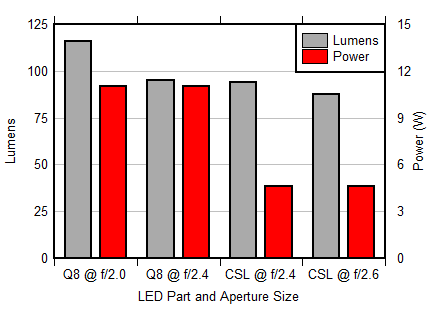TIDUEE5A October 2018 – May 2022
- Description
- Resources
- Features
- Applications
- 5
- 1System Description
- 2System Overview
- 3Hardware, Software, Testing Requirements, and Test Results
- 4Design Files
- 5Software Files
- 6Related Documentation
- 7Terminology
- 8Revision History
2.4.2.4 LED Selection Summary
Figure 2-9 shows that despite emitting more lumens, larger LEDs do not necessarily offer more system lumens. This example uses Osram’s Q8WP and CSL LEDs which are readily available for the automotive market today. For a PGU that requires 55 lumens, CSL LEDs with an f/2.6 aperture provide more than the required brightness at the best power efficiency.
 Figure 2-9 Brightness vs Power With Different LEDs and f/#
Figure 2-9 Brightness vs Power With Different LEDs and f/#